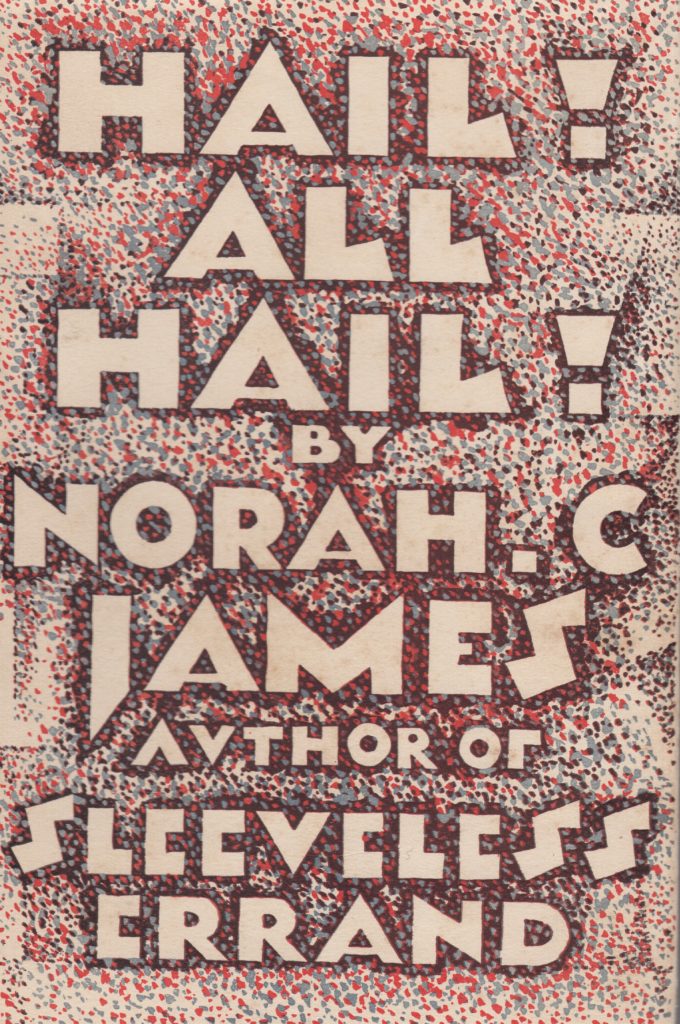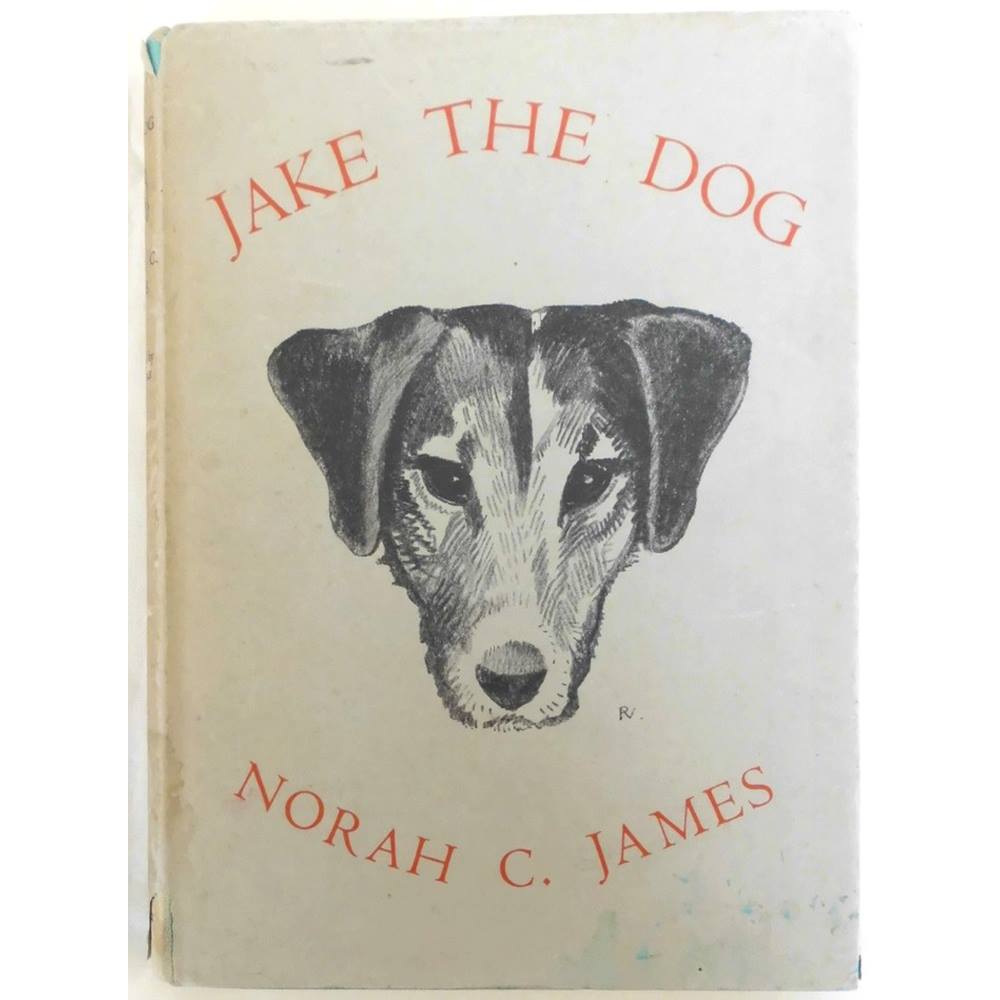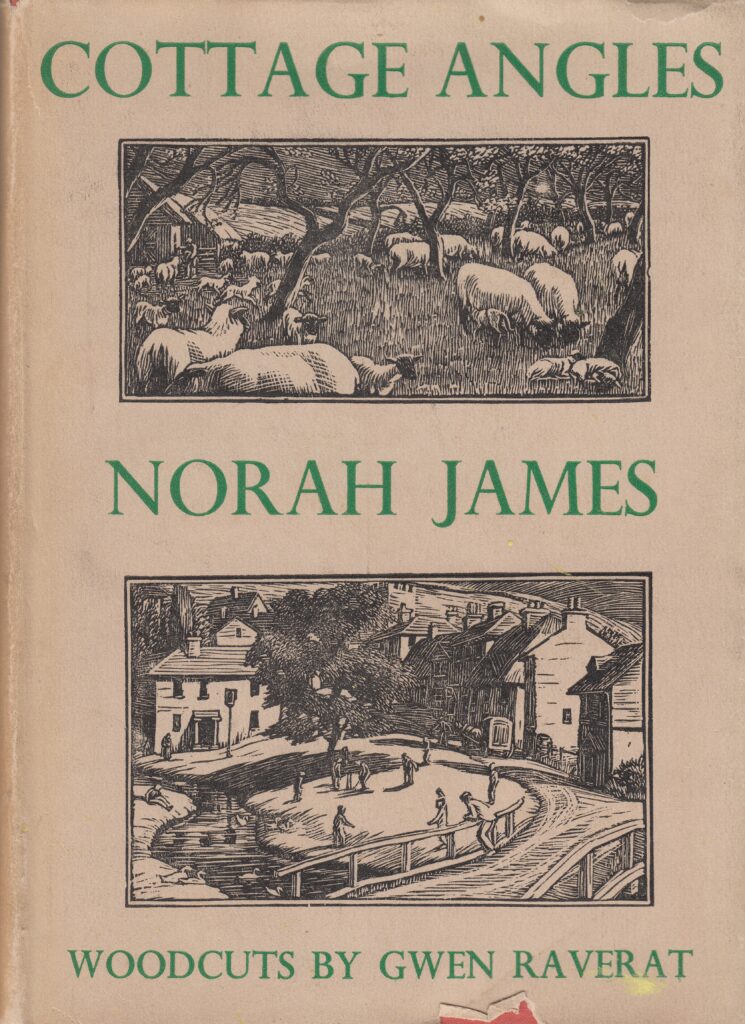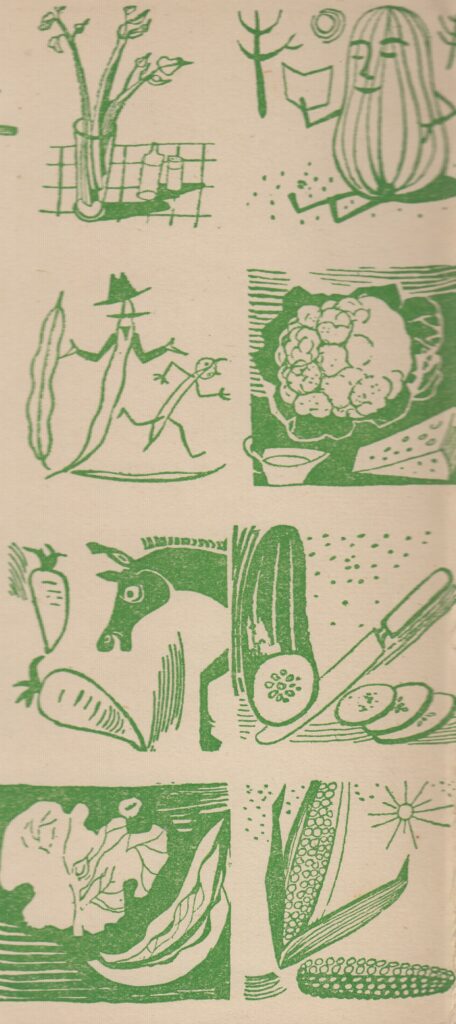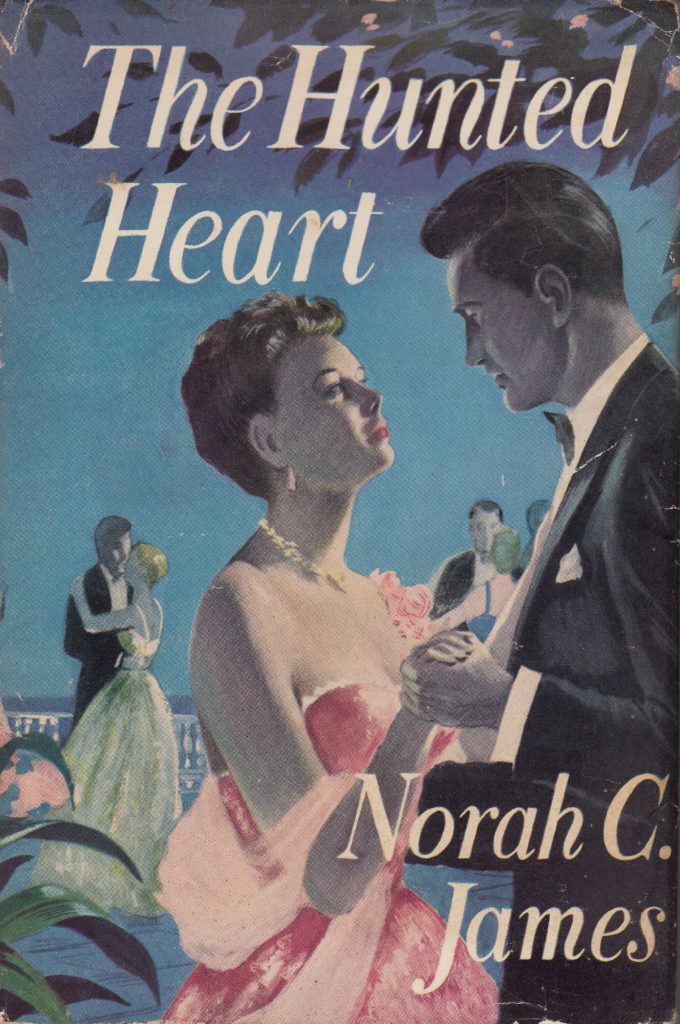If you have never heard of ‘Sleeveless Errand’ by Norah Margaret Ruth Cordner James, or of James herself, it is not surprising. Known as ‘Jimmy’ to her friends and associates, James officially became an ‘authoress’ with the publication of ‘Sleeveless Errand’ in 1929.
The novel was swiftly ruled obscene at the Bow Street Police Court in March 1929, giving James a place on the roll call of authors with British banned books; a place that is neglected in favour of more esteemed names and better writers including James Joyce, Radclyffe Hall, D.H. Lawrence (see my post on ‘Mr Reuben, Penguin Books & Lady Chatterley’) and Vladimir Nabokov. If it wasn’t for James and ‘Sleeveless Errand’, however, many banned books by these authors would not have been made available so quickly to a wider audience.

James lived from 1896 to 1979, and had numerous occupations. She was an art student at the Slade, a civil servant and trade union organiser at the Ministry of Pensions, a publicist for the English publisher Jonathan Cape, literary talent scout for American publisher William Morrow, a journalist, private secretary to parliamentary candidate Barbara Ayrton-Gould (mother of the sculptor, filmmaker and author, Michael Ayrton), and the Author’s Society representative on the National Book Council. In 1939 James joined the Auxiliary Fire Service and then the Air Transport Auxiliary. She was appointed Staff Captain in the Directorate of Public Relations at the War Office and invalided out in 1943. She later became a borough councillor in Finsbury.
The oeuvre of a minor author
James wrote over 75 publications including novels, radio plays and a great many short stories and articles such as a 1938 feature for the Aberdeen Press and Journal entitled, ‘Are you a cheat in the marriage game?’
A 1936 review of a James novel, ‘The Lion Beat the Unicorn’, describes her works as a ‘gallery of very human men and women–people like you and your neighbour and the rest of the world.’ The review declares that family life is a theme with which James is very much at home. From the titles I’ve read thus far, this assessment captures the essence of James’ approach to her writing and points to her popular appeal amongst a certain demographic.

I wonder if any of James’ readers were aware that she was gay (or as one would say in her day, lesbian). Not many, I suspect. For the second half of her life James lived with her partner, and occasional co-author, Barbara Beauchamp. In her 1939 autobiography (dedicated to Beauchamp), James chose to avoid writing about her ‘emotional life’.
So far, I’ve read the following:
Sleeveless Errand (1929)
Hail! All Hail! (1929)
I Lived in a Democracy (1939) (autobiography)
Jake the Dog: An Animal Story (1933) (illustrated by Ruth Vale)
Mrs Piffy: A Child’s-Eye View of Life (1934) (illustrated with photographs by C.C. Gaddum)
Cottage Angles (1935) (illustrated by Gwen Raverat)
The Hunted Heart (1941)
Green Fingers and the Gourmet (1949), with Barbara Beauchamp (illustrated by Bruce Roberts)
Hospital Angles (1966) (not ‘Angels’ as listed by the bookseller)
In another 1936 review of another novel, ‘By a Side Wind’, described as ‘curiously mixed’, James’ story is said to be told with,
‘a wearying of sincere simplicity. To the simple-minded who are not afraid of writing that does not call a spade a garden implement, this queer mixture might be palatable.’

The romances are not really my cup of tea but I felt I should read a few to get an overall sense of James’ style. When my copy of ‘Hospital Angles’ arrived and I noticed that it was published by Hurst and Blackett, I must confess I couldn’t get Dr Evadne Hinge and Dame Hilda Bracket and their hilarious double entendres out of my mind. I can just hear them singing this line from ‘The Hunted Heart’,
‘His mind sped out the room, tossed forth from the high, bright column of his longing.’
Research and rumours
On reading James’ autobiography, it is not difficult to see that much of ‘Sleeveless Errand’ is autobiographical, though I’m pleased to acknowledge that James’ real life took a very different turn to that of her protagonist, Paula Cranford. James’ life is not terribly well documented and I’m still piecing together a chronology and narrative with a mind to publishing a concise biography at some time in the future. I do have enough material for an illustrated talk and will add the topic to my current list of available topics for groups and societies (see page on this website).
I do know that for a number of years during the 1930s, James had a weekend cottage in Great Gransden, the village where I currently reside. I have our friend Val Davison, organiser of the Gransdens Society, to thank for introducing me to the life and work of James. I’m also grateful for the support and encouragement of Dr Charles Turner, friend and village resident, whose aunt’s dog, Brandy, appears in ‘Jake the Dog.’

People do still talk about James’ weekend life in Great Gransden. There is rumour of a ménage à trois, but that is all it is, rumour. We know she jointly purchased the Old Cottage in West Street with Margaret and Frederick Voigt in the early 1930s and she mainly lived with Margaret in London whilst Frederick worked in Berlin for the Manchester Guardian. In 1929, James had travelled to America with Margaret (an American journalist and biographer, Margaret – formerly Margaret Goldsmith – had had a short affair in Berlin with Vita Sackville-West in 1928 and went on to divorce Voigt in 1935).
James on the book trade
James’ autobiography is one of her more interesting tomes, not least because she had a spell working for the publisher, Jonathan Cape from 1926, and makes insightful observations of the book trade which are still relevant today. She observed the prosaic aspects of the business which involved, ‘sitting at a desk and calculating the price of paper per pound’, and acknowledged also, the excitement of the unknown whereby,
‘the whole thing was a gamble. Probably only one book out of five makes money for the publisher. Although you think that you can generally guess which of the five is a winner, you’re not always right.’
Her specific role at Cape was in the ‘queer game’ of publicity and she astutely recognised that a book sells if people talk about it. For James, a book has to be ‘talk-worthy’,
‘One can suggest, in various ways, to people, the book they should be speaking about, but if they haven’t the urge to talk, they won’t. Nevertheless, it is one of the most important things in selling a book.’
And on authors, she writes, ‘Then there were the authors, quite important people–although not so important as they often imagined.’
‘Sleeveless Errand’
The plot is uncomplicated and takes place over two days in the early 1920s. Paula Cranford, jilted by her lover, resolves to commit suicide. She meets Bill Cleland and together they wander around London night clubs meeting Paula’s bohemian associates, ‘The Crowd’. Paula and Bill talk all night at her place about their respective families and circumstances, and form a suicide pact, planning to drive a hire car over a cliff on the coast. They drive towards Hove, break down in Brighton and spend the night in a hotel where they meet with a travelling revue company. Bill has second thoughts about suicide and Paula persuades him to return to his wife. She then ends her own life as she had planned before meeting Bill.

Alexander Lockwood, in his 2014 doctoral thesis, observes that ‘Sleeveless Errand’ fails to support post-war efforts to renew British identity through a ‘conservative modernity’ of fixed social relations, marriage and women’s domesticity. During the 1920s the tide was certainly turning, as Patricia Fara, in her 2018 examination of science and suffrage in the First World War (‘A Lab of One’s Own’), concludes, when she declares that however much traditionalists argued for a return to the old conventions, the upheavals of wartime had proved that social change was possible,
‘gender boundaries were more severely challenged and there was no going back to exactly the same situation.’
The feminist cause does not appear, however, to be a primary concern in James’ perceived rejection of the old conventions in this novel. One wonders if her protagonist, Paula, is wedded to any cause at all, as she rejects life itself and all that it entails. The clue is in the title, as given in this definition from The Oxford Dictionary which James herself cites at the beginning;
‘Sleeveless Errand :– Ending in, or leading to nothing’
(Meaning a fool’s errand, this now obsolete phrase is found in Act Five of Shakespeare’s Troilus and Cressida.)
We know from early on in the novel that Paula is planning to commit suicide. We even know how she will do it. But why?
Various suggestions have been put forward, including the post-war malaise, an augmentation of the disappointment that characterised ‘feminine middlebrow’ fiction and the failure of hope, a profound boredom, and a rejection of the internal reflection that was afforded by the flowering of psychoanalysis in contemporary popular culture.
The literary critic, Edward Garnett, who wrote the Preface for the First Paris Edition of ‘Sleeveless Errand’ (1929), had called the novel, ‘a real diagnosis of the War generation’s neurotics’. He had also concluded, in his Preface, that the novel’s censorship was a case of, ‘moral righteousness and official Pecksniffery’.

In the Preface, Garnett cites Arnold Bennett’s assessment of the novel as,
“an absolutely merciless exposure of neurotics and decadents, and I should say that the effect of it on the young reader would have been to destroy in him all immoral and unconventional impulses for ever and ever.”
James declared her novel was indeed about neurotics but was not of itself, neurotic. The post-war malaise is certainly not ignored, and Paula Cranford has her own distinctive take on happiness, the moral code, pacifism, the Church, democracy, sexual control and corruption, and marriage. Whilst declaring that her generation seems not to have any moral values at all, Paula says,
“as a whole, my generation of women is rotten to the core… We sneer at goodness and decency whenever we come across it. We’re bored with people who aren’t bawdy. We call them prigs and prudes if they don’t want to talk about copulation at lunchtime and buggery at dinner. We despise people who don’t swill booze down as we do,”
She does at least pose a determinant,
“Freedom came too quickly for us. We weren’t ready for it. We had no reserves with which to meet the deadly disappointment after the War of finding ourselves workless, and husbandless and useless. Those of us who had cared a bit about reconstruction and all that came down with even a greater bang, for we found that there wasn’t going to be any reconstruction at all… it’s in the next generation of children that the chance of a better future lies. The only thing my sort can do is to contaminate them as little as possible.”
Lockwood acknowledges that boredom was a common experience in the interwar period. Paula’s boredom is manifested in her refusal to wallow in self-analysis. In her conversations with Bill, Paula refers to her own ‘handicap of bad heredity’ and calls herself a ‘hopeless egoist’ and a ‘neurotic emotionalist’. But having done so, she then rejects the modern way of introspection (a way that could possibly lead to a reason for living) and, ultimately, any perceived notion of a noble obligation to society, as she tells Bill,
“I’m not going from any quixotic idea that because I’m part of the plague spot I ought to; no, it’s simply that I’m unutterably bored.”
Bill thinks to himself,
“She’s right to die; she at any rate is damned.”
The publication of ‘Sleeveless Errand’

In 1928, Eric Honeywood Partridge of Scholartis Press accepted the manuscript of ‘Sleeveless Errand’ for publication. He paid James a £25 advance and received pre-orders from booksellers for around 1,500 copies (the cover price was 7s6d). (Partridge went on to become a renowned lexicographer. I recently bought a 1937 edition of his ‘Dictionary of Slang and Unconventional English’, in which I could not find an entry for the phrase, ‘sleeveless errand’, or indeed, ‘fool’s errand’.)
James had previously offered the manuscript of ‘Sleeveless Errand’ to her employer, Jonathan Cape, who, whilst appreciating a ‘glowing’ 1928 assessment by Garnett (‘A very interesting novel very well written’), was concerned about upsetting his authors who might have thought she had neglected the promotion of their books for her own writing. In 1939 James writes,
‘I had to agree with him that it might lead to difficulties with some of our authors. I knew how touchy they could be.’
She had also offered the manuscript to the Hogarth Press, meeting with Leonard and Virginia Woolf who turned it down (later on, following the book’s suppression, Virginia described it as ‘vulgar’ but not offensive).
An obscene book
The British Establishment condemned ‘Sleeveless Errand’ with incredible speed, effectively obliterating the very act of publication. Although according to Neil Pearson in his 2007 history of Jack Kahane’s Obelisk Press (see below), a few collectors and copyright libraries retained a copy from that first print run, technically retaining it as the first edition. Copies had also been sent to reviewers and to Partridge’s contacts in America.
It was reported that on the evening of 20 February 1929, the Police seized 517 copies. They called upon Eric Partridge at home, escorted him to his office in Museum Street, and confiscated all 289 copies therein including 39 that bore James’ signature. They listed the names of all who had received copies; ten booksellers, the distributor Simpkin Marshall (250 copies) and the exporter William Jackson and Company (100 copies). According to one report, Scotland Yard posted a police constable outside the premises of a bookseller who had placed the book on display in his shop window whilst taking a short holiday. They also visited a reviewer and seized her advance copy, and 1,000 unbound sheets from the The Garden City Press Ltd in Letchworth.
James was oblivious to these events and in 1939 recalls,
‘On the day of publication I walked to the office in Bedford Square, and, on my way, passed a news placard saying: “Woman’s Novel Seized.” So far was I from connecting SE with that news item, that I never even stopped to buy a copy of the paper.’
Just three months earlier James had attended the trial of another banned book, ‘The Well of Loneliness’ by Radclyffe Hall. It was the first time she had ever been inside a courtroom. James had got to know Hall through Jonathan Cape who had asked her to read Hall’s manuscript when he was considering publication. Hall and James both frequented the Cave of Harmony, a club owned by the actress Elsa Lanchester (‘Bride of Frankenstein’), a popular meeting place for London intellectuals. James writes in her autobiography,
‘I found her [Hall] an extremely highly-strung woman, with one of the kindest hearts in the world… The Well of Loneliness was a fine and sincere piece of work, and I think it did a great deal of good in enlightening people on a subject that had been too long hidden under a veil of dirty innuendo or shamed self-conscious silence.’

Ostensibly banned because of its obscene language (see below), although in the American edition only three words were cut from the original text, ‘Sleeveless Errand’ tends to be coupled with ‘The Well of Loneliness’ by academics and historians. The challenge that these two books represented to the patriarchal status quo has been observed as a factor in their censorship. Angela Ingram, for example, declares that both novels, in their different ways, show how ‘utterly unalluring’ heterosexual life often was.
The two novels have, however, fared very differently. Initially republished in 1949, ‘The Well of Loneliness’ has over the years gained what Harrison calls, a ‘cultural legitimacy’ that is denied to ‘Sleeveless Errand’. But then ‘The Well of Loneliness’ was a landmark in the history of queer literature.

‘Impure Literature: Moral reformers, in the name of the Young Person, are eager for the suppression of “improper” novels in which women novelists, by the way, do a brisk trade’
One of the gentleman is saying, “What we need, my dear Sirs, is legislation to prevent our daughters from reading the novels they have written!”
In 1929, the writer and publisher Percy ‘Inky’ Stephensen, penned a lampoon entitled, ‘The Well of Sleevelessness’, also published by Scholartis Press.
The trial
The British Home Secretary, Sir William Joynson-Hicks (a public morality campaigner who had been instrumental in the prosecution of ‘The Well of Loneliness’), sent a copy of ‘Sleeveless Errand’ to the Director of Public Prosecutions. He had received his copy from the editor of the Morning Post with a covering note declaring the book obscene. A Home Office briefing prepared by a senior civil servant declares,
‘It is astonishing that such a book could be written by a woman, but the authoress must be a woman whose command of foul, obscene, indecent and profane language is, I should hope, unique amongst women who can write.’
The Home Office file for the prosecution itself is missing but there is a transcript of the trial and The Times reported the court proceedings on 5 March 1929. The case against the book, as put by Mr Percival Clarke, supporting the summons on behalf of the Director of Public Prosecutions, is reported accordingly,
‘The book itself was a novel of 239 pages. The story concerned a period of two days, and was told in the form of a conversation by persons entirely devoid of decency and morality, who for the most part were under the influence of drink, and who not only tolerated but even advocated adultery and promiscuous fornication. Filthy language and indecent situations appeared to be the keynote of the book. He (counsel) did not pretend to be a literary critic, but it seemed to him to be degrading that such a collection of obscene matter should be published by any respectable firm. It was the aim of some writers to pass off as literature matter which could only have a degrading, immoral influence, and which tended to excite unhealthy persons; and to command a market by writing daring and corrupt stories. One thing noticeable about this book was that the name of God or Christ was taken in vain more than 60 times in a way which shocked. Mr. Clarke quoted from the book the saying of one character, “For Christ’s sake give me a drink”, and said that profanity could not possibly be justified, even by the characters in the book.’

The Crown Prosecutor’s file highlighted certain lines from the novel, such as, ‘We call them prigs and prudes if they don’t want to talk about copulation at lunchtime and buggery at dinner.’
Mr Clarke is reported in The Times as stating, “There are decent-minded people who read books and appreciate some of the beauties in English literature, and they look to the strong arm of the law to check and prevent the broadcasting of such foul stuff as this.”
And for the defence, The Times reports Mr Sandlands as stating, “There were a lot of horrible things in it, but the object of the book was to hold up to horror the mode of life and the language and habits of a certain section of the community… far from tending to deprave and demoralise, this book tended entirely the other way. Shakespeare’s works and the Old Testament mentioned horrible things in order to condemn them or to exhort against their use… It called attention to the despair and hopelessness and waste of the life alluded to by contrasting it with a normal life.”
Lord Chief Justice Cockburn was certain that the book would, “suggest to the minds of the young of either sex, or even to persons of more advanced years, thoughts of a most impure character.” He made an order for the destruction of the seized copies; 785 of the 799 were destroyed (there are questions over exactly how many copies Scholartis Press had in the first print run).
Later, in 1939, James writes,
‘I could not understand why. The book had been read by a number of well-known literary people in manuscript, and no one had suggested that I should make any cuts in it. But, apparently, it was called an obscene book–simply because of the words used in it. I would have cut them out willingly if I’d been told it was necessary. But I’d never been told that. It never occurred to me that it would be considered obscene to let the characters in it use the language they used in real life… I don’t believe the book was obscene. I do know that it was a kind of sermon against the stupidity and futility of the life a section of the post-war generation was leading.’
Harrison acknowledges that the official reason for the novel’s suppression cannot help but be attributed to James’s own supposed naïve or superficial–but ultimately heretical–attempt at “being frank”. Its vocabulary was crude, but according to James and her publisher, not intentionally obscene. In a contemporary interview with The Times, James described ‘Sleeveless Errand’ as “an extremely moral book and a condemnation of the people and the life it portrays.” Eric Partridge was of the opinion that the novel had been suppressed for political reasons, with obscenity being a ‘mere pretext’.
Paris and United States editions
An English writer in Paris, Jack Kahane, was also quick off the mark. Having followed the ‘Sleeveless Errand’ case, he decided to publish an English-language edition in France and secured the rights accordingly. James stipulated that half of her royalties from the Kahane deal be paid to Eric Partridge by way of recompense for the loss of income brought about by the trial. She also agreed to place her next novel, ‘Hail! All Hail!’ with Scholartis, which came out in 1929 with this introduction,
‘Miss James’s first novel, Sleeveless Errandwas suppressed. Her new story deals most attractively with life in the English countryside and with a poor district in West Central London. Hail! All Hail! shows an undoubted advance on Sleeveless Errand, which Mr. Arnold Bennett declared to be well constructed and well written, and to disclose a new talent for fiction. Here the pattern of a certain family’s life is worked out with skill and a rare sympathy.’


Kahane’s first Paris Edition of ‘Sleeveless Errand’ was published in April 1929 (copies appeared in French bookshops as early as the end of March 1929). Kahane paid Edward Garnett five hundred francs for the preface and set the cover price at one hundred francs. The resulting profit of four hundred thousand francs effectively kickstarted Kahane’s publishing career. He went on to establish the Obelisk Press and re-printed several banned books including Henry Miller’s ‘Tropic of Cancer’ and books by D.H. Lawrence, James Joyce and Radclyffe Hall.
An American edition of ‘Sleeveless Errand’ was published by William Morrow and sold well (around 20,000 copies), enabling James to buy a second-hand car and a typewriter (Morrow also gave James the job of representing his firm in Britain as a literary scout). ‘Sleeveless Errand’ was translated into at least six other languages but has never be republished in Britain.
Following the publication in America, Basil Dean, the English film director and theatrical producer, told James that he was quite taken with the book and thought it would make a good play. James, who had high hopes, wrote a script which Dean showed to Noel Coward, who found it to be ‘too defeatist’. The American actress, Talullah Bankhead, told James she thought Paula was not a nice character, and declared, “actresses don’t like being thought not nice–on the stage or off it!”
Still marginalized
Wren Sidhe in her 2001 doctoral thesis, considers ‘Sleeveless Errand’ to be ‘an indictment of the generation responsible for the prosecution of the war’ and observes as a matter of interest, the fact that court reports neglect this aspect of the text in favour of one which accuses the writer and publisher of immorality. The novel presented a real challenge to re-imagining the nation. This perspective points to the novel’s suppression as a case of conspiratorial or state-sanctioned action; a conclusion reached by Harrison who calls ‘Sleeveless Errand’ a ‘marginalized and possibly marginal novel’.
‘Sleeveless Errand’ certainly has a place in censorship and publishing history and, as Lockwood points out, it contributed to the establishment of the Obelisk Press and was ‘the first link in the chain’ of their publication of other banned yet more enduring books.
Opinion on the quality of James’ writing in ‘Sleeveless Errand’ is divided. In 1934, T. S. Matthews, literary editor of Time Magazine, described ‘Sleeveless Errand’ as, ‘A story of post-war London; one of the few convincing suicide stories I remember.’ In contrast, Neil Pearson describes it as ‘a deeply terrible book, maudlin, melodramatic and fatally upstaged by its obvious and unabsorbed influences.’ A review recently published on Sheffield Hallam University’s blog on popular fiction 1900-1950, concludes the narrative would have been more successful if the story had been shorter and sharper.

Whilst the subject matter of ‘Sleeveless Errand’ holds much interest, I personally find James’ writing at times clunky and guileless. I’m not offended by the novel’s content, though I suspect there are those today who would find certain terms unacceptable, including the ‘n’ word and, like me, would disagree with Bill’s private thoughts on women and rape.
The story of the book and its censorship would make an excellent drama, especially if placed in the capable hands of British playwright and director, Stephen Poliakoff, who has so successfully tackled a number of intriguing episodes in twentieth century history.
Durability is something that ‘Sleeveless Errand’ lacks, as it is still ‘quarantined from literary expression’.
Perhaps it is time for a new British edition, with or without expurgation.
***
Brief bibliography, in addition to James’ works cited above:
‘Before he was a lexicographer: Eric Partridge and the Scholartis Press’, a talk given to the Book Collectors’ Society of Australia, 24 September 2010 – https://bookcollectors.org.au/before-he-was-a-lexicographer-eric-partridge-and-the-scholartis-press/ [accessed May 2019]
Book review, ‘Sleeveless Errand’ by Sylvia D on the blog for Sheffield Hallam University’s ‘Readerships and Literary Cultures 1900-1950 Special Collection’, 16 March 2019 – https://reading19001950.wordpress.com/2019/03/16/sleeveless-errand-1929-by-norah-c-james/ [accessed May 2019]
Fara, Patricia (2018) ‘A Lab of One’s Own: Science and Suffrage in the First World War’, Oxford University Press
Harrison, Bill (2013) ‘Censors, critics, and the suppression of Norah James’s Sleeveless Errand’ in Atenea, Jan 1, 2013
Ingram, Angela (1986), ‘Unutterable putrefaction’ and ‘foul stuff’: Two ‘obscene’ novels of the 1920s’, Women’s Studies International Forum, Volume 9, Issue 4, 1986, pp. 341–354.
Lockwood, Alexander (2014), ‘A Self of One’s Own: Psychoanalysis, Self-Identity and Affect, 1909-1939 – A Creative and Critical Exploration’, doctoral thesis, Newcastle University
Pearson, Neil (2007), ‘Obelisk: A History of Jack Kahane and the Obelisk Press’, Liverpool University Press
Sidhe, Wren (2001), ‘Bodies, Books and the Bucolic: Englishness, Literature and Sexuality, 1918-1939’, doctoral thesis, Cheltenham and Gloucester College of Higher Education
